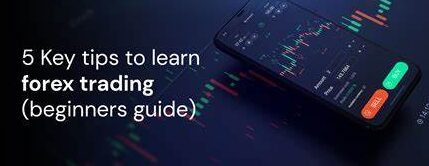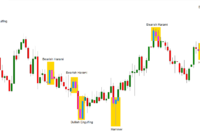bbc.towzdog.com – In today’s digital age, Forex trading has become more accessible than ever. Whether you’re looking to earn some extra income or embark on a full-time trading career, learning how to trade Forex online can be a game-changer. This comprehensive guide will walk you through everything you need to know to get started in Forex trading, from understanding the basics to advanced strategies.
What is Forex Trading?
Understanding the Forex Market
Forex trading involves exchanging one currency for another in the foreign exchange market, also known as the FX market. Unlike other financial markets, Forex is decentralized and operates 24 hours a day, five days a week. The primary aim of Forex trading is to profit from fluctuations in currency exchange rates.
Key Concepts in Forex Trading
- Currency Pairs: Forex is traded in pairs, such as EUR/USD (Euro/US Dollar) or GBP/JPY (British Pound/Japanese Yen). The first currency in the pair is the base currency, while the second is the quote currency.
- Pips: A pip is the smallest price move that a given exchange rate can make based on market convention. For most currency pairs, this is usually the fourth decimal place.
- Leverage: Leverage allows traders to control larger positions with a smaller amount of capital. While this can amplify profits, it also increases the risk of losses.
Why Learn Forex Trading Online?
Accessibility and Flexibility
Learning Forex trading online offers unparalleled flexibility. You can study and practice from the comfort of your home or on the go, fitting your learning around your schedule.
Resources and Tools
The internet provides a wealth of resources, including:
- Online Courses: Many platforms offer structured courses tailored for beginners and advanced traders.
- Webinars: Live sessions allow you to learn from experienced traders and ask questions in real-time.
- Demo Accounts: Most brokers provide demo accounts to practice trading without risking real money.
Community Support
Online trading communities, forums, and social media groups can offer invaluable support. You can connect with other traders, share experiences, and gain insights into the latest market trends.
Getting Started with Forex Trading Online
Choose the Right Broker
Selecting a reputable Forex broker is the first step in your trading journey. Consider the following factors:
- Regulation: Make sure the broker is regulated by recognized authorities such as the FCA (Financial Conduct Authority) or ASIC (Australian Securities and Investments Commission).
- Trading Platform: Look for user-friendly platforms like MetaTrader 4 (MT4) or MetaTrader 5 (MT5), which offer advanced charting tools and indicators.
- Fees and Spreads: Compare the spreads and commissions across different brokers to find the most competitive rates.
Open a Trading Account
After choosing a broker, you’ll need to open a trading account. Brokers typically offer several types of accounts:
- Standard Accounts: Suitable for most traders, offering a balance between features and costs.
- Mini or Micro Accounts: These accounts require lower initial deposits and allow for smaller trade sizes, making them ideal for beginners.
- Demo Accounts: Perfect for practicing trading strategies without financial risk.
Learn the Basics of Forex Trading
Understanding the fundamentals of Forex trading is essential. Here are some key concepts to grasp:
Market Structure
Familiarize yourself with how the Forex market operates. The market consists of major players like banks, financial institutions, corporations, and retail traders. Understanding this structure helps you identify market movements.
Economic Indicators
Economic indicators influence currency values. Key indicators include:
- Gross Domestic Product (GDP): Reflects the economic health of a country.
- Unemployment Rate: High unemployment can weaken a currency.
- Inflation: Rising inflation may prompt central banks to increase interest rates.
Develop a Trading Plan
Creating a well-structured trading plan is vital for success. Your plan should outline:
- Trading Goals: Define what you aim to achieve in terms of profit and learning.
- Risk Management: Determine how much capital you’re willing to risk per trade and set stop-loss orders to limit losses.
- Trading Strategy: Decide on a strategy that suits your style, whether it’s day trading, swing trading, or scalping.
Effective Forex Trading Strategies
Technical Analysis
Technical analysis involves analyzing historical price data to forecast future movements. Key tools include:
- Charts: Candlestick charts are widely used for their ability to display price movements over time.
- Indicators: Popular indicators like Moving Averages, Relative Strength Index (RSI), and Bollinger Bands help traders identify trends and reversals.
Example: Using Moving Averages
A common strategy involves using two moving averages, such as the 50-day and 200-day moving averages. A buy signal occurs when the shorter moving average crosses above the longer one, indicating a potential upward trend.
Fundamental Analysis
Fundamental analysis focuses on economic news and events that influence currency values. Important events include:
- Interest Rate Decisions: Central banks may change interest rates, impacting currency value.
- Economic Reports: Pay attention to releases like employment data, GDP growth, and inflation reports.
Risk Management Techniques
Managing risk is crucial for long-term success in Forex trading. Here are some effective techniques:
- Stop-Loss Orders: Set a predetermined price at which your position will automatically close to prevent further losses.
- Position Sizing: Determine the appropriate trade size based on your account balance and risk tolerance.
- Diversification: Avoid concentrating your capital in one trade or currency pair.
Learning Resources for Forex Trading
Online Courses
There are many platforms offering Forex trading courses, including:
- Udemy: Offers a variety of courses, from beginner to advanced trading strategies.
- Coursera: Provides courses from accredited institutions focusing on trading fundamentals and strategies.
YouTube Channels
YouTube is a great resource for learning Forex trading through video tutorials. Some popular channels include:
- Trading 212: Offers comprehensive tutorials on trading basics and advanced strategies.
- ForexSignals TV: Features live trading sessions and educational content.
Trading Books
Books can provide in-depth knowledge about Forex trading. Some recommended titles include:
- “Currency Trading for Dummies” by Kathleen Brooks and Brian Dolan: A great starter guide for beginners.
- “Trading in the Zone” by Mark Douglas: Focuses on the psychological aspects of trading.
Online Communities
Engage with other traders through online forums and communities. Websites like BabyPips and Forex Factory offer forums where traders share strategies, tips, and experiences.
Staying Informed: Market News and Analysis
Economic Calendars
An economic calendar is a crucial tool for Forex traders. It lists upcoming economic events and reports that could affect currency prices. Websites like Investing.com provide up-to-date economic calendars with relevant news.
Market News Platforms
Stay updated on market news through platforms like:
- Bloomberg: Offers comprehensive financial news and analysis.
- Reuters: Provides real-time news updates and market analysis.
Conclusion
Learning Forex trading online can open up a world of opportunities for aspiring traders. By understanding the basics, developing a solid trading plan, and continuously honing your skills, you can navigate the complexities of the Forex market with confidence.
As you embark on this journey, remember to practice patience, stick to your trading plan, and prioritize risk management. The Forex market can be unpredictable, but with the right approach, you can achieve success.
For more detailed resources and a wealth of educational material, visit BabyPips, a valuable platform for both new and experienced traders. Happy trading!




